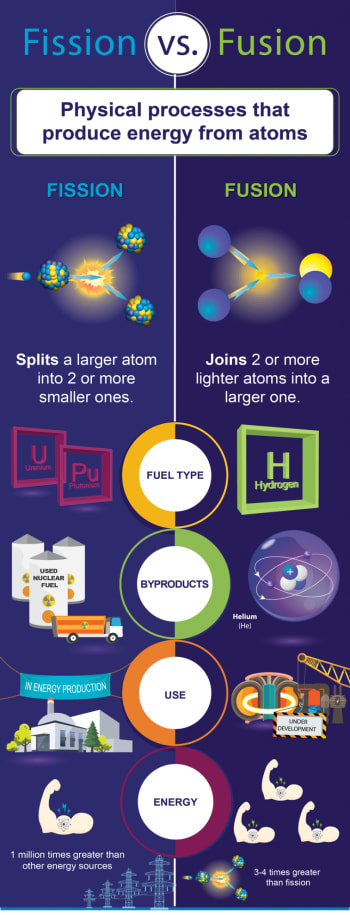Harnessing the power of the sun—that is the dream of nuclear fusion engineers, but how close is the technology to realization?
The inside of the Joint European Torus tokamak generator. (Image courtesy of EUROfusion.)
In this article, we examine the technology, including the numerous projects currently underway—not the least of which is the massive ITER fusion reactor being constructed in the south of France—to understand just how it is evolving and whether or not it will be deployed any time soon.
Fusion vs. Fission

Whereas nuclear fission is the splitting of the atoms of an atomic nucleus, fusion is the fusing of nuclei. Both processes release energy. In the case of fission, an unstable isotope (most commonly Uranium-235) is bombarded with particles (usually neutrons) until one accelerated particle divides the nucleus of the isotope, resulting in two smaller isotopes, three neutrons, gamma rays, and the heat energy of the reaction.
This energy is then used to heat water to create electricity, while the remaining neutrons perform subsequent reactions with other nuclei. The fission products are used for such applications as nuclear fuel, aircraft counterweights, armor plating, radiation therapy, or anti-tank shells.
In contrast, nuclear fusion occurs with the joining of nuclei from two low-mass isotopes (usually forms of Hydrogen, like Tritium and Deuterium) under extreme heat and pressure (think Sun-level extreme). Using hydrogen atoms, this reaction…

